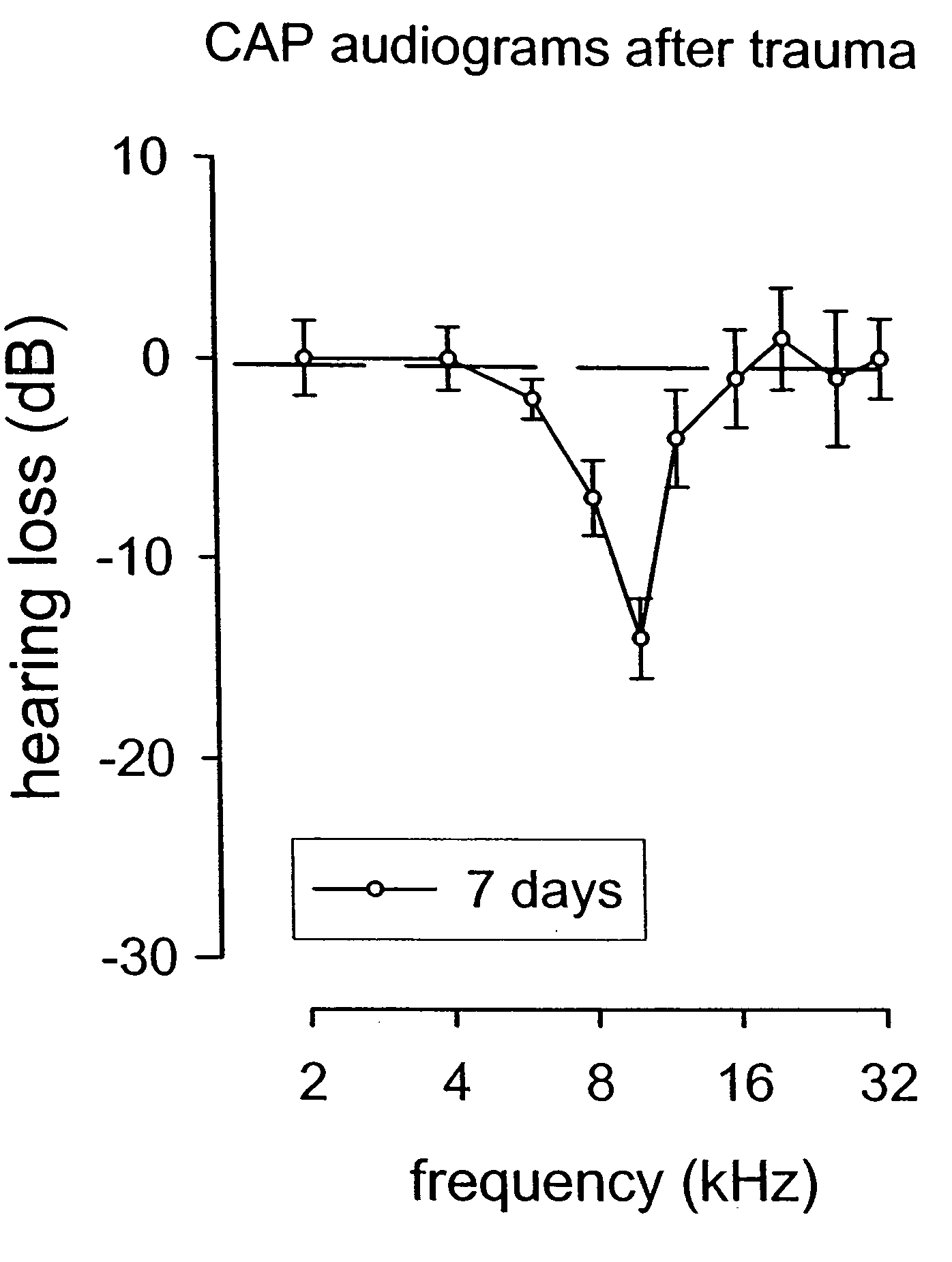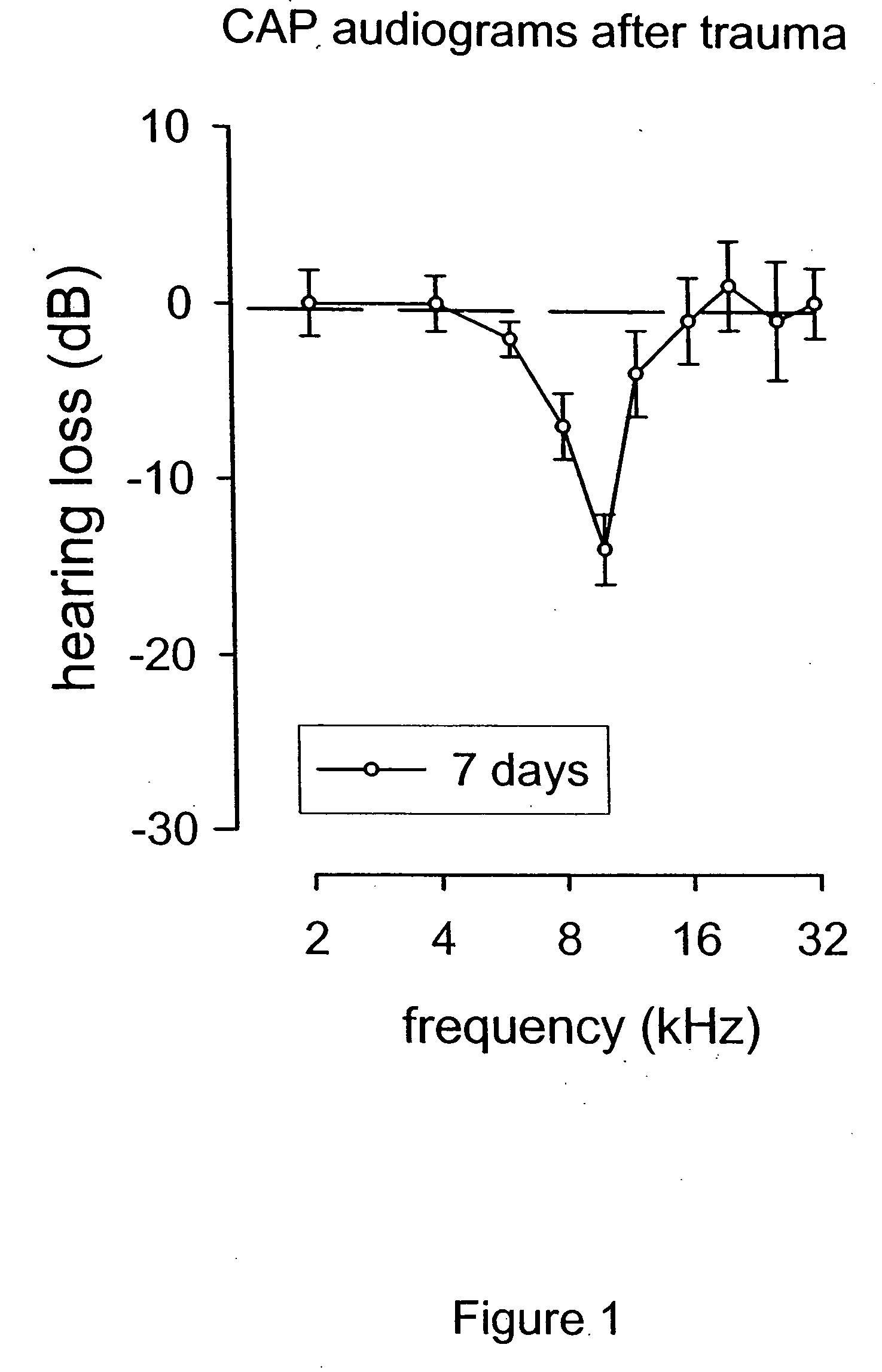Methods for the treatment of tinnitus induced by cochlear excitotoxicity
a cochlear excitotoxicity and tinnitus technology, applied in the field of cochlear excitotoxicity-induced tinnitus treatment, can solve the problems of inability to truly effective treat the disease, damage to the target neuron, and may eventually die, and achieve the effects of preventing and/or treating tinnitus, suppressing or reducing the aberrant activity of the nmda receptor of the auditory nerve, and preventing
- Summary
- Abstract
- Description
- Claims
- Application Information
AI Technical Summary
Benefits of technology
Problems solved by technology
Method used
Image
Examples
example 1
Methods and Materials
[0035] We developed and tested an animal model of tinnitus induced by cochlear excitotoxicity, which was provoked by acoustic trauma. As tinnitus in general is not directly observable, as cochlear excitotoxicity does not result in tinnitus in all individuals, and as perceptions of tinnitus may just disappear a few hours after the excitotoxic incident or last forever, the definition and implementation of such an animal model represented a substantial challenge. These considerations mean for example that more animals are required to obtain a sufficient number of tinnitus cases for study and to permit observation of tinnitus over time. As it is unclear whether a case of tinnitus induced by cochlear excitotoxicity is to last or not, it is advisable to conduct studies in its early stages.
[0036] The experiments were performed in two stages. First, the hearing loss following acute acoustic trauma as well as the incidence of tinnitus were evaluated with no therapeuti...
PUM
| Property | Measurement | Unit |
|---|---|---|
| sound pressure level | aaaaa | aaaaa |
| frequency | aaaaa | aaaaa |
| stress | aaaaa | aaaaa |
Abstract
Description
Claims
Application Information
 Login to View More
Login to View More - R&D
- Intellectual Property
- Life Sciences
- Materials
- Tech Scout
- Unparalleled Data Quality
- Higher Quality Content
- 60% Fewer Hallucinations
Browse by: Latest US Patents, China's latest patents, Technical Efficacy Thesaurus, Application Domain, Technology Topic, Popular Technical Reports.
© 2025 PatSnap. All rights reserved.Legal|Privacy policy|Modern Slavery Act Transparency Statement|Sitemap|About US| Contact US: help@patsnap.com



